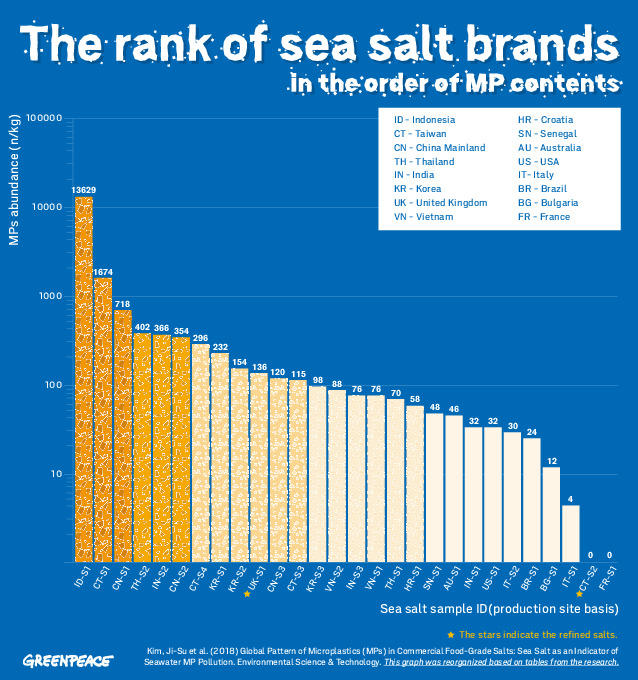Image: Shutterstock
The problem of plastic pollution can seem really removed from everyday life—until you realize you’re literally sprinkling plastic onto your food. A new study that tested 39 different salt brands from around the world identified microplastics in 36 of them, or 92 percent. It’s a stark reminder of how our addiction to single-use plastics is leaching into our ecosystems.“Recent studies have found plastics in seafood, wildlife, tap water, and now in salt,” Mikyoung Kim, a campaigner for Greenpeace East Asia, which collaborated on the study, said in a press release. “It’s clear that there is no escape from this plastics crisis, especially as it continues to leak into our waterways and oceans.”The amount of plastic in the salt varied widely by brand, according to the study, which was published this week in Environmental Science & Technology. There were three that had none, and some with as low as 28 pieces of microplastic per kilogram of salt, while the worst offenders had as much as 13,000 pieces of microplastic in one kilogram of salt. The concentration was higher in sea salt compared to lake and rock salt, and the highest levels were found in Asian brands, with Indonesia seeing the highest concentration of microplastics. Based on these findings, the researchers estimate the average adult consumes 2,000 pieces of microplastic every year from salt alone.
The concentration was higher in sea salt compared to lake and rock salt, and the highest levels were found in Asian brands, with Indonesia seeing the highest concentration of microplastics. Based on these findings, the researchers estimate the average adult consumes 2,000 pieces of microplastic every year from salt alone.
Advertisement

When plastic pollution enters the environment, it starts to break apart into smaller and smaller pieces. When those fragments get so small that they’re barely visible—smaller than 5 millimeters—they’re considered microplastics, and they often find their way into the food we eat, the water we drink, and the salt we sprinkle.We still don’t know what, if any, effect consuming tiny bits of plastic might have on our body, but it’s a safe assumption that we probably don’t want to be eating hard synthetic hunks of petroleum. As single-use plastics like bottled water and take-out containers have become more prolific, we’ve been creating millions of tons of waste every year—91 percent of which isn’t recycled. If we don’t want to see the amount microplastics in our diet start to climb, the best thing we can do is curb our addiction to plastic.Read more: Beauty Industry-Funded Study Suggests Microplastics ‘Are Not Causing Harm to the Environment'
